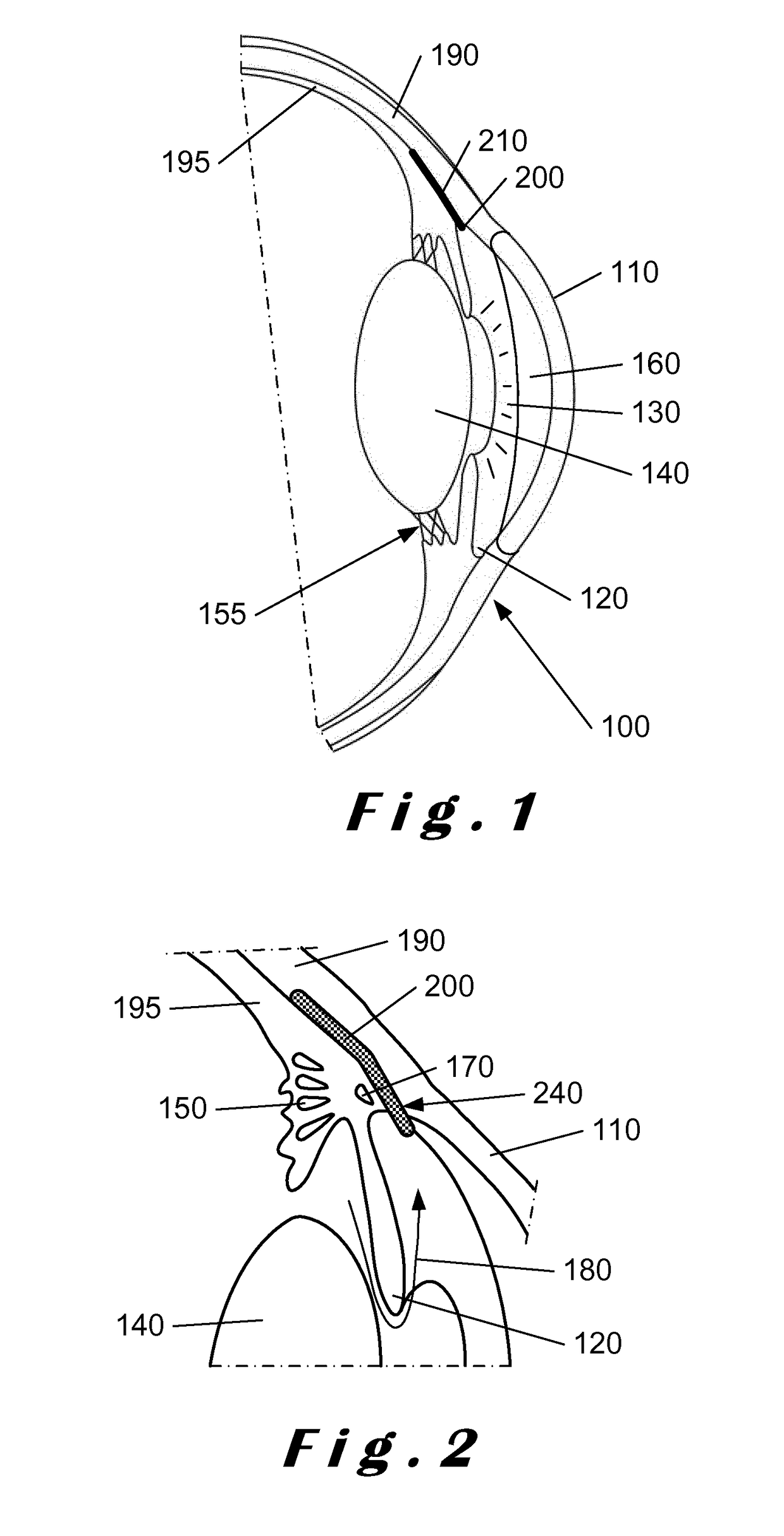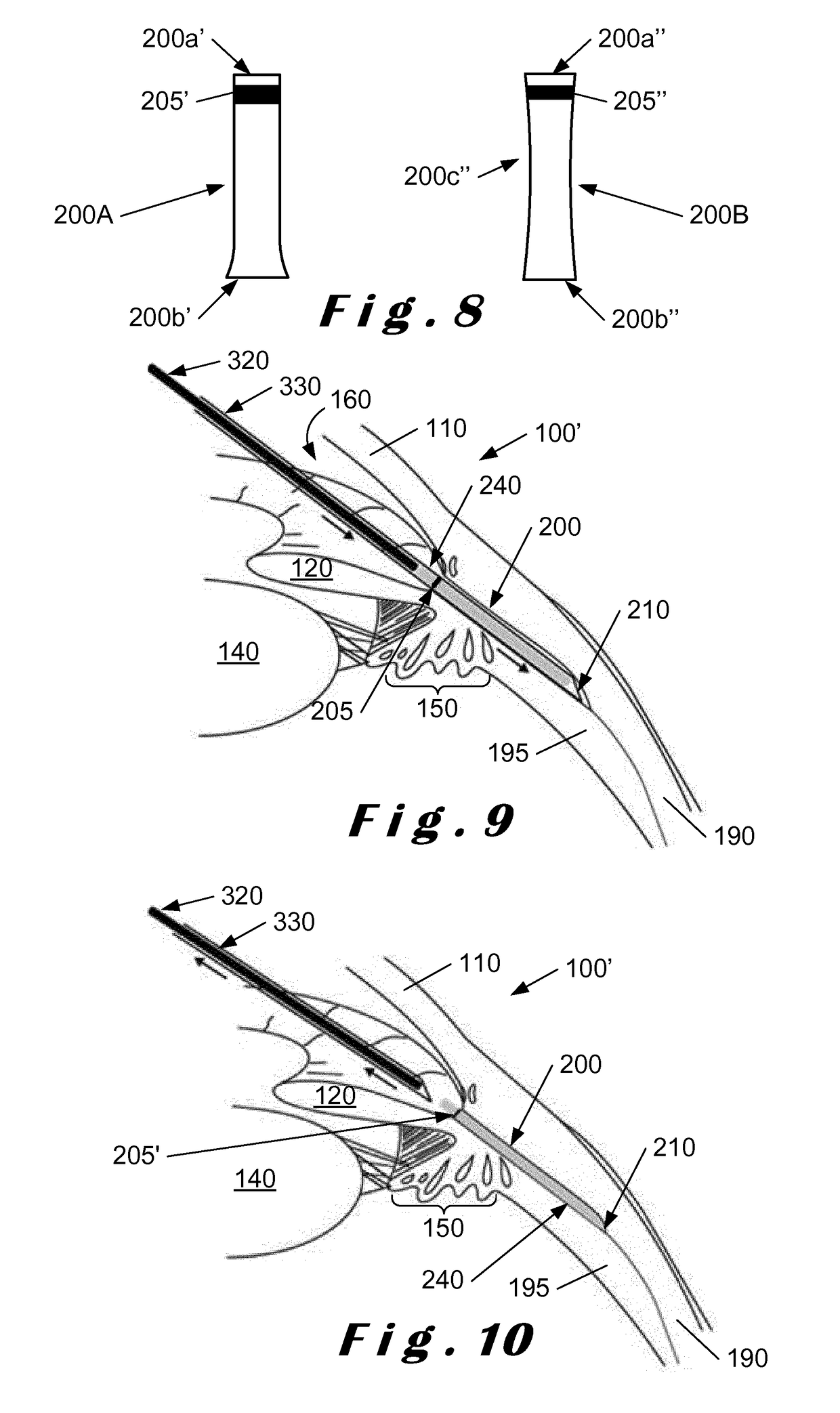Ocular Implant Systems
a technology of ocular implants and ocular nerves, applied in the field of ocular nerve implants, can solve the problems of irreversible damage to the optic nerve and loss of vision, significant changes in the iop related to the cardiac cycle, and erratic dosages, and achieve the effects of reducing the risk of ocular nerve damage, and improving the quality of li
- Summary
- Abstract
- Description
- Claims
- Application Information
AI Technical Summary
Benefits of technology
Problems solved by technology
Method used
Image
Examples
Embodiment Construction
[0067]The present invention will be described with respect to particular embodiments and with reference to certain drawings but the invention is not limited thereto. The drawings described are only schematic and are non-limiting. In the drawings, the size of some of the elements may be exaggerated and not drawn on scale for illustrative purposes.
[0068]The present invention relates to a system which comprises a single-use “minimally-invasive” implantation or deployment device from which an intraocular shunt or implant is deployed into the suprachoroidal space, that is, the space lying between the sclera and the choroid of the eye, or into the subconjunctival space, that is, the space lying between the conjunctiva and the sclera of the eye. The intraocular shunt or implant is pre-loaded within a portion of the implantation or deployment device and is released therefrom as will be described in more detail below. In one embodiment, the implantation or deployment device is single use, bu...
PUM
 Login to view more
Login to view more Abstract
Description
Claims
Application Information
 Login to view more
Login to view more - R&D Engineer
- R&D Manager
- IP Professional
- Industry Leading Data Capabilities
- Powerful AI technology
- Patent DNA Extraction
Browse by: Latest US Patents, China's latest patents, Technical Efficacy Thesaurus, Application Domain, Technology Topic.
© 2024 PatSnap. All rights reserved.Legal|Privacy policy|Modern Slavery Act Transparency Statement|Sitemap



